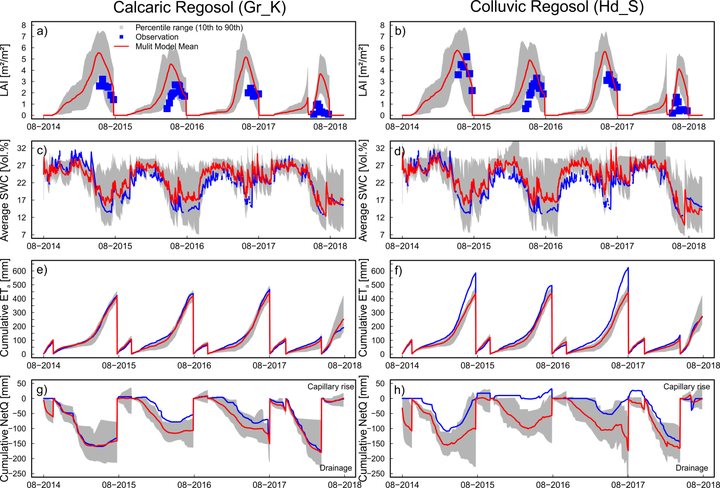[17] Crop growth and soil water fluxes at erosion-affected arable sites: A model inter-comparison based on weighing-lysimeter observations

Abstract
Agro-ecosystem models need to reliably simulate all biophysical processes that control crop growth particularly the soil water fluxes and nutrient dynamics. As a result of the erosion history, truncated and colluvial soil profiles coexist in arable fields. The erosion-affected field-scale soil spatial heterogeneity may limit agro-ecosystem model predictions. The objective was to identify the variation in the importance of soil properties and soil profile modifications in agro-ecosystem models for both agronomic and environmental performance. Four lysimeters with different soil types were used that cover the range of soil variability in an erosion-affected hummocky agricultural landscape. Twelve models were calibrated on crop phenological stages and model performance was tested against observed grain yield, aboveground biomass, leaf area index, actual evapotranspiration, drainage, and soil water content Despite considering identical input data, the predictive capability among models was highly diverse. Neither a single crop model nor the Multi Model Mean was able to capture the observed differences between the four soil profiles in agronomic and environmental variables. The model´s sensitive to soil-related parameters was apparently limited and depending on model structure and parameterization. Information on phenology alone seemed insufficient to calibrate crop models. The results demonstrated model-specific differences in the impact of soil variability and suggested that soil matters in predictive agro-ecosystem models. Soil processes need to receive greater attention in field-scale agro-ecosystem modelling; high precision weighable lysimeters can provide valuable data for improving the description of soil-vegetation-atmosphere process in the tested models.